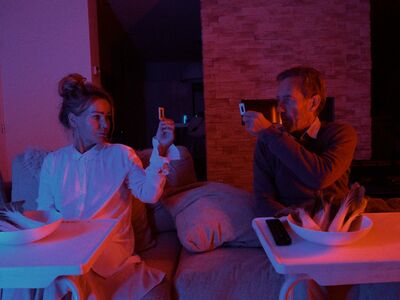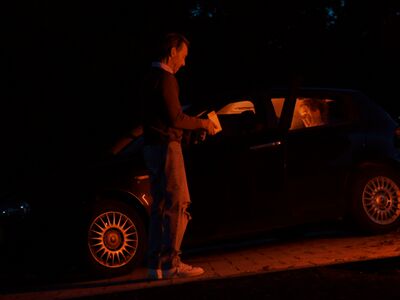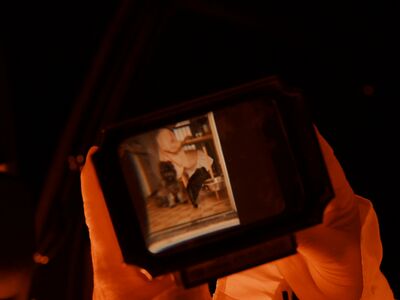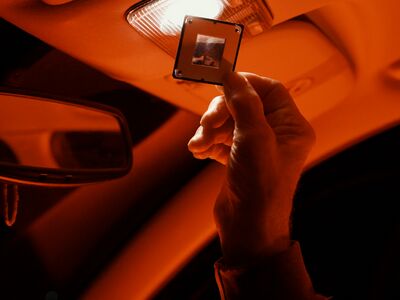User:Do.westphal
Hi I'm Do, welcome to my research.
Methods session one.
what, how, why
old version:
What ‘’Nooit meer terug’’ is an experimental coming of age film about the journey of a girl who lost herself in an addiction where she thought she found herself in.
In this movie we’re following two characters. The character 10 years ago and the character 4 years ago. The younger character is surrounded by nature and calmness. But while being there she develops some kind of feeling of anxiety because she is ‘alone’. She starts panicking and runs to a big ignorant building. This building seems to be a maze where she meets the 10 years older version of herself. This 10 years older character seems to get lost in this maze as a symbolic representative for her addiction. While the two characters are losing their way deeper and deeper in this maze, the little girl will be able to get the older addicted character out of there by making her face her younger self.
How
This story is told in a very symbolic and referring way. For example, the little girl stands representative for the intrinsic motivation someone with the disease ‘addiction’ needs to feel to get better. The ‘maze’ is a symbol for the struggle with addiction and slowly losing sight of reality which entails an addiction. Because the film contains a lot of ‘unlogic’ moments which I like to call ‘emotional realism’, that some people do and some people don’t notice, it seems that this movie is about conveying a feeling (in this case a struggle) and not telling a logical story. The film doesn't only exist about these symbolic methods of narration. There’s a third layer, the voice over, that narrates a real life interview between the narrator and a psychologist that refers to the visually shown symbols.
Why
I made this film in this specific symbolic form, because I was looking for a way to tell my biggest untold story. My past struggle with addiction. Until the day I started this production, this was the hardest and most unspoken thing for me, ever. Because I was going to make this film I also started a journey to develop a visual translation for something that was this hard to actually ‘speak’ about. I found out that this film actually became the tool for telling and eventually closing this period of my life and started processing it.
new version
What
‘’Nooit meer terug’’ is an experimental coming of age film about the journey of a girl who lost herself in an addiction where she thought she found herself in.
In this movie we’re following two characters. The character 10 years ago and the character 4 years ago. The younger character is surrounded by nature and calmness. But while being there she develops some kind of feeling of anxiety because she is ‘alone’. She starts panicking and runs to a big ignorant building. This building seems to be a maze where she meets the 10 years older version of herself. This 10 years older character seemed to get rid of this anxious feeling of being alone, where the little girl was running from. But got lost in this maze as a symbolic representative for her addiction. While the two characters are losing their way deeper and deeper in this maze, the little girl will be able to get the older addicted character out of there by making her face her younger self.
new corrections: how long is the film? are you working with actors? did you write a script? go through the whole process give a concrete description
How
This story is told in a very symbolic and referring way. For example, the little girl stands representative for the intrinsic motivation someone with the disease ‘addiction’ needs to feel to get better. The ‘maze’ is a symbol for the struggle with addiction and slowly losing sight of reality which entails an addiction. The film contains a lot of ‘unlogic’ moments which I like to call ‘emotional realism’, that some people do and some people don’t notice. Because of the use of this emotional realism, the audience can let go of realistic structure and just let themselves be guided by the feelings they get while watching the movie. In addition to these symbolic methods of narration that you can find in both visual and audio layer, there is a third layer, – the voice over. The voice over narrates a real life interview between the narrator and a psychologist that refers to the visually shown symbols.
new corrections:
tell a bit more about the process try to tell more about the journey how you were going to ‘tell’ this story what did work, what didn’t work? what was this learning process? how did you work with the young actor?
Why
I made this film in this specific symbolic form, because I was looking for a way to tell my biggest untold story. My past struggle with addiction. Until the day I started this production, this was the hardest and most unspoken thing for me, ever. Because I was going to make this film I also started a journey to develop a visual translation for something that was this hard to actually ‘speak’ about. I found out that this film actually became the tool for telling and eventually closing this period of my life and started processing it. And by developing this visual translation, more untold stories will be told in the future.
Methods Session Two: Interview
What are you making?
I am making a film for the eye Museum inspired by old dia slides. Old dia slides I find in old tucked-away boxes, or even in: vintage shops. These old dia slides I consider to be ‘forgotten memories’. And these forgotten memories, I want to revitalize.
Why are you making it?
Why I am making this project is because it happens to be, that if I go to some markets or stores or something like this. I always find these old dia’s for sale. And this actually amazed me. Why are they here???? First of all, I cannot imagine the fact that I throw away or give away my pictures that are now printed and hanging on my wall. Or nowadays, storaged in ‘the cloud’. To a store. This I think is just absurd. But on the other hand, times change… so maybe it was easier back in the days to do this. But still, all these images (these dia’s) are memories. Are all these memories forgotten? Or are we so sucked in our ever-innovating and fast-paced life, that we don’t have time to stand still and remember these moments.
It’s also a good practice for me as a storyteller, because I have no information or any background information on these dias. So to still create a well-flowing story, that’s going to be challenging.
In my last project ‘’Nooit meer terug’’, I had a story ready to go, because it was my own. The only thing I was looking for was the visual translation. Now I have to somehow ‘recreate’ existing images and a narrative.
Even though I'm not telling my own story here, I actually am. First of all I just wanted to give these dia’s a new life. Because, I just ‘found’ these dia’s, and they have (or had) their own story. But while making the first ‘scenes’ somehow a storyline emerged by itself. I recreated two dia’s, one of a man standing next to his car. And the other one, of a lady sitting on her kitchen table while her dog is sitting on the floor next to her. But in this recreated image the ‘actors’ are looking at the original dia through a viewer. Because of this, the ‘forgotten memory’ isn’t just recreated, but the created image also communicates that the moments are being ‘remembered’ or even re-lived.
This outcome wasn’t my first intention, because I was still looking for this specific intention, but it just happened to be. I think I just want to bring people back to their memories for a moment.
How does it relate to other things you have done?
This project relates to other things I’ve done in the way that I can really unleash myself as a D.O.P. I love to tell stories by using camera movement, the use of light and set design. In my previous project ‘’Nooit meer terug’’ where I actually wasn’t the D.O.P myself, but the director. I still worked a lot with symbolism and emotional realism. This symbolism was found in the locations I used and how I used these. Also the use of audio (no dialogue), color and light was very symbolic. This really is something that keeps coming back in every work I make and what represents my style as a visual storyteller.
How is it different to other things you have done?
How it’s different from other things I’ve done is because in this project I’m going to do something that fascinates me for a really long time. And that thing is ‘building the stage/set around the camera’. How you normally go to a place or location that helps you to tell the story, I now want to really experiment and play with these surroundings. In the series Euphoria, some sets are completely built around the camera. This is something I really want to explore while doing it in this project.
What are the most significant choices have you made recently?
Important choices I made recently are the use of light, color, camera movement and the choice that the actors are ‘frozen’. (which together form the recurring use of emotional realism). And all these choices I made, need to be in harmony. The images, or should I call them: ‘forgotten memories’ that I've found are not moving, and two-dimensional. But a memory is. And because it’s a memory there’s also a lot of imagination involved. This imagination is found in the use of color, I chose to use warm colors which are overly dramatic. This is because I want to communicate the feeling that going back to these memories creates this familiar, warm but also emotional feeling. I chose to freeze the actors for two reasons: I want the ‘camera’ to walk through this memory and transform this two-dimensional dia into a three-dimensional landscape. And I want to communicate ‘standing still’ literally by dwelling on your memories.
What question does it ask?
I don't know if it's specifically a question that my work is going to ask. I think it’s more a reaction to how everybody is so sucked in living in these ever-innovating and fast-paced lives. Their phones (also mine) filled with maybe more than 10.000 pictures which I will never look at again.
Maybe it’s nice to have this moment of standing-still, have a talk with someone, grab an old picture and move back to this memory together or alone.
When seeing all these dia’s in all these stores.. I really felt like: What? These things are all memories, why are they here, what are they doing here? Looking at these images fascinated me so much, and I was super impressed and interested in what I was looking at and this feeling of reliving this moment, I haven’t even witnessed myself, felt really good.
Thematics
Do_Thematics_Self-Directed_Research




